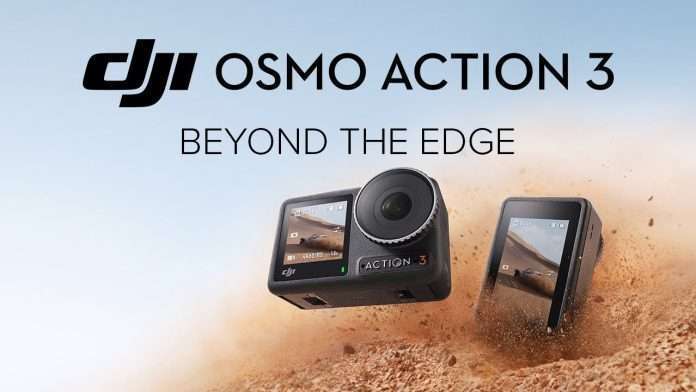A quick recap. When DJI’s first action camera was unveiled in 2019, it garnered a very favorable 9/10 rating. In 2021, the Osmo Action was followed by Action 2. The modular architecture and price positioning of this second iteration had not been well welcomed, receiving a 6/10 in our columns. DJI is going back to basics with its third action camera towards the end of 2022, using the chance to reintroduce the Osmo prefix after deleting it for Action 2. As if there was a wish to sweep this second iteration under the rug?
The claims of the Osmo Action 3 are neither unexpected nor disappointing, but DJI’s camera costs roughly $100 less than the GoPro Hero 11 Black. What exactly is it worth? In our comprehensive review of the DJI Osmo Action 3, we provide an immediate response.
TECHNICAL SHEET :
| Model | DJI Osmo Action 3 |
|---|---|
| Prix | 329 $ |
DESIGN & INTERFACE :
DESIGN :
The DJI Action 2’s modular architecture let us down. Although physically pleasing, the gadget appeared to have been created in a lab and had little to say about an action camera… committed to action.
This year, DJI returns to the normal style of a 2020s action cam, specifically a GoPro look with a large screen on the rear and a tiny screen on the front. Above all, the camera returns to its plastic structure, which is better suited to action – and more reassuring to handle – than the brushed metal of the Action 2.


In terms of dimensions, the Osmo Action 3 is somewhat smaller than the GoPro Hero 11 Black, but otherwise similar: 70.5 44.2 32.8 mm vs. 71.8 50.8 33.6mm. The DJI camera weighs less than 150 grams and is 8 grams less than the GoPro Hero 11 Black.
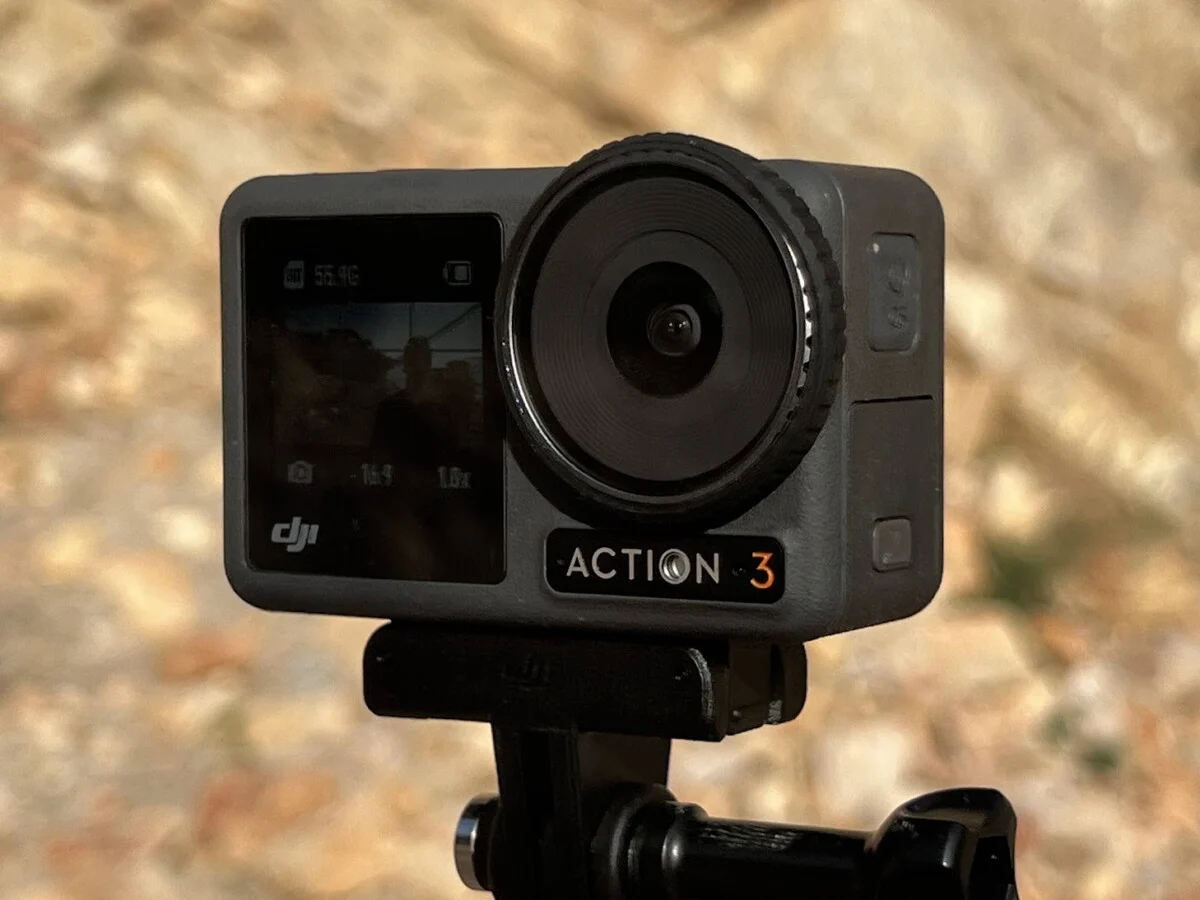
Take note of the clever incorporation of a color temperature sensor in the O of ” Action 3 ” engraved underneath the sensor, at the front of the camera. We shall return to the impact (or lack thereof) of this sensor later in this test.
The 2.25-inch back screen has a resolution of 360 640 pixels. In usage, the latter is marginally more appealing to the eye than the GoPro – a non-scientific research based on comments from two of my relatives.

This rear screen is, of course, color and touchscreen. However, on the front, we must mention the presence of touch, which is not possible to interact with the front displays of the current GoPros. When the back screen of the DJI Osmo Action 3 is inaccessible, for example, you will be able to alter the definition using the front screen.

DJI has tidied up the physical buttons and eliminated the highly popular third button from the original version Osmo Action. We’ll return to this point in the following part, which is all about the camera interface. As a result, we have two physical buttons, which are positioned similarly to those on a GoPro, namely the recording button at the top right and the ignition/mode button on the left edge. These are more difficult to push than those on GoPro cameras.

To be more specific, they lack soft edges, making them more difficult to locate under the finger. This will probably prevent some inadvertent pushing, but with our gloves on during a bike ride, it was plain impractical. On a motorcycle or skis, for example, the buttons will be significantly more difficult to press. This is a significant drawback for a camera ostensibly geared for motion.

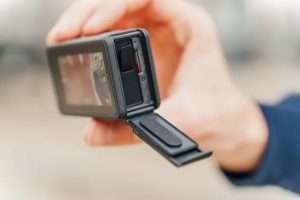
The USB-C connector for charging and file transfer is isolated from the others by a hatch on the left edge of the camera, while the detachable battery and microSD card are concealed by the similar hatch on the right edge. This second hatch similarly opens weirdly upwards, which is a simple habit to develop.
Let’s speak about the mounting system, which is an important component of an action camera. DJI retains the magnetic technology used in the Action 2, but improves on its upkeep. Let us begin again for those who have not followed. Unlike the most recent GoPros, which feature two little hinged rods on the lower side, the Osmo Action 3 needs adhering to an installation support and then screwing into an accessory. In other words, the GoPro camera incorporates the traditional screw for action camera accessories, but the DJI camera requires an extra component.

Is it stupid? Well, not always. If you just have a single installation mount for your Osmo Action 3, the GoPro’s onboard rods will come in handy. Consider the case where you have two or three DJI installation media. Assume one on an attachment attached to your motorcycle’s handlebars and one on the specific helmet mount. In this case, all you have to do is unclip the Osmo Action 3 from the initial installation support on the handlebars (without unscrewing anything), then clip it onto the helmet’s installation support (without screwing anything). With GoPro, the camera would have had to be unscrewed from the first accessory before screwing it back on the second.

The connection between the Osmo Action 3 and this well-known mounting bracket is straightforward. Simply approach the lower edge of the camera and the support, allowing magnetism to work its magic while pressing on the support to ensure that the two legs are connected. As with our Action 2 test, we recommend that you do not skip this final step: occasionally the strength of the magnets is insufficient to lock the two legs together.
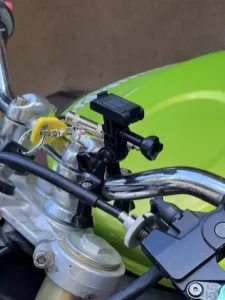
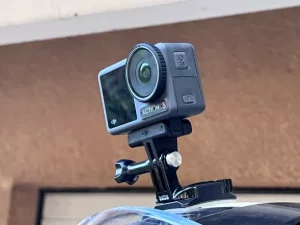
The combination of magnets and fixing brackets also appears more resistant than that of the Action 2, or at least more reassuring: we were less afraid of touching the brackets during an activity – which could unhook and cause the camera to fall – than we were of touching the brackets during an activity. In a nutshell, this approach has been developed, carefully thought out, and is finally compatible with “action” use.

DJI’s Osmo Action 3 has a “horizontal-vertical protection structure.” It’s a shell, but it’s not designed to protect the camera. Yes, this frame permits for a second magnetic camera attachment point, this time on the right edge. The concept is straightforward: utilize the Osmo Action 3 in vertical mode on any accessory, again using the mounting bracket. It should be noted that even after the camera has been immured in the protective frame, the original connection provided on the lower edge remains useable.


Let’s get to the claims of product resistance, which is a crucial factor for a so-called action camera. The DJI Osmo Action 3 is reported to be able to record for more than two hours in temperatures as low as -20°C. Go to the autonomous section of this test to double-check everything.
READ ALSO : Microsoft Dev Kit 2023 Review
In terms of sealing, the brand claims a maximum of 16 meters, which is 6 meters longer than the GoPro. These are certainly not snorkeling depths, but it is an undeniable benefit for first dives and, why not, the PADI Open Water (at 18 meters) if you are a player — jokes aside, focus on you rather than your manometer.

The displays and lens protection of the Osmo Action 3 are constructed of Gorilla Glass, although the brand does not indicate which version it is. We only know that they are meant to resist a 1.5-meter fall.
The good news is that these three pieces benefit from a hydrophobic coating as well. We enjoyed GoPro’s feature, which typically eliminates having to lick the lens cover to clean the drips from the plan once out of the water.

INTERFACE :
The Osmo Action 3 interface is quite easy to use. A swipe down brings up the fast settings, while the opposite movement brings up the definitions and frame rate menu, which is thus considerably more accessible than GoPro’s. However, we are still perplexed as to why the menu dedicated to fields of vision is isolated and hence more difficult to access.

On the contrary, let us highlight some good innovations that DJI has adopted in the UI. When recording, a finger swipe down lets you put the screen to standby for 3 seconds, forever, or 10 minutes. During our testing, this functionality proved to be really handy. When switched on directly with the record button, the camera also shows the user a three-second countdown before shutting off, allowing a single action to turn on the camera and begin recording.
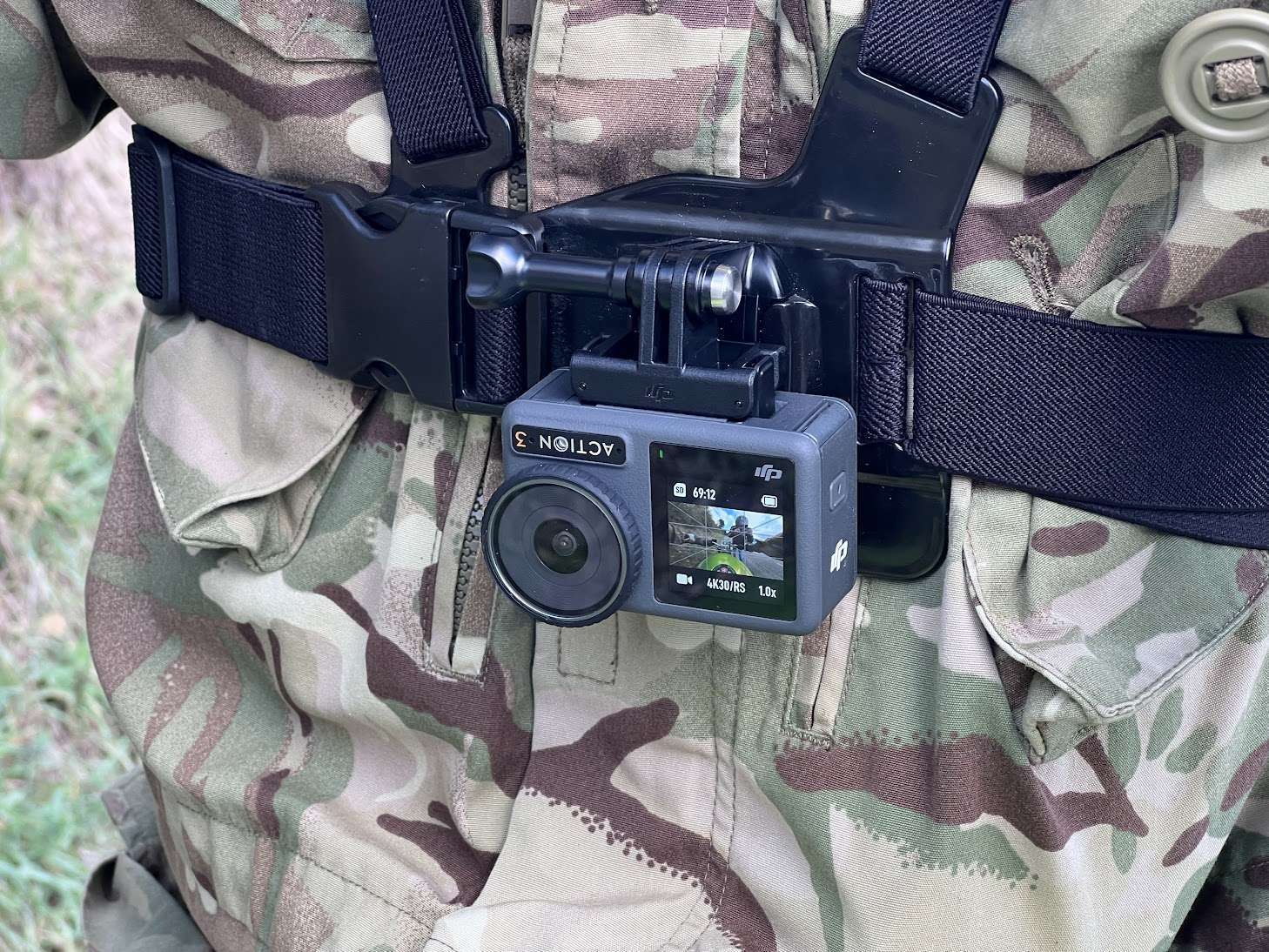
In that regard, the Osmo Action 3 charges nearly twice as quickly as the GoPro Hero 11 Black. As a result, the DJI camera can launch a movie in less than three seconds. That’s a significant advantage for an action camera.
The camera’s side button, similar to the side button on GoPros, turns the camera on and switches modes. DJI distinguishes itself by including recording profiles in these modes. Thus, pushing the side button on the Osmo Action 3 allows us to transition from 4K 30 fps video mode with a conventional field of view to 4K 30 fps video mode with an ultra-wide field of view – all without having to go through the specific parameters. Of course, each user is allowed to save as many profiles as he wants. This QuickSwitch function is severely absent in GoPro; a comparable option exists, but needs more intricate manipulation.
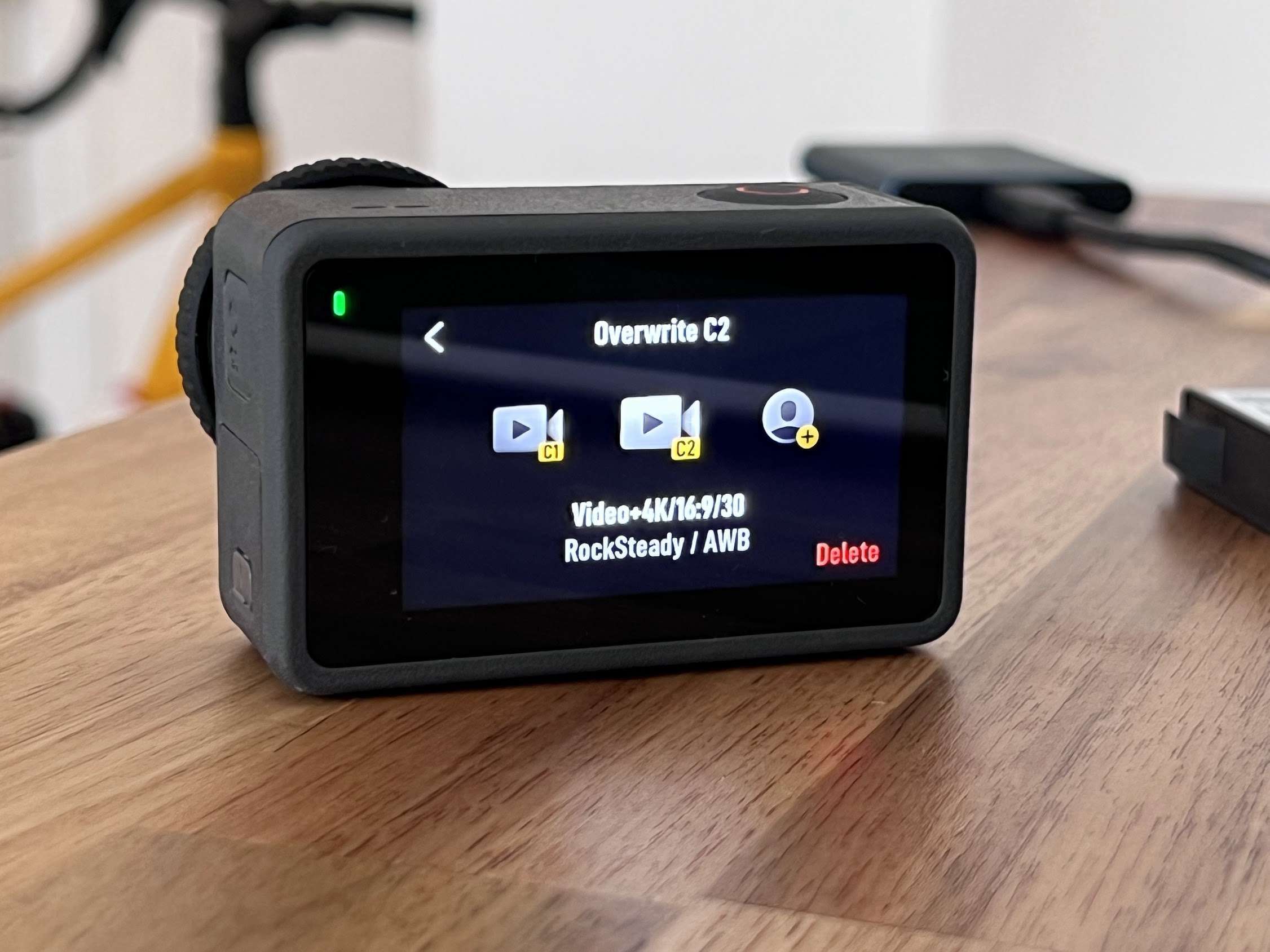
While recording, both Osmo Action 3 displays are visible. When you momentarily flip the camera around to video oneself, there is no need to conduct any modification, which is quite convenient. However, you can only interact with one screen at a time: for example, to alter the frame rate, you must unlock the front screen (with a swipe of your finger).
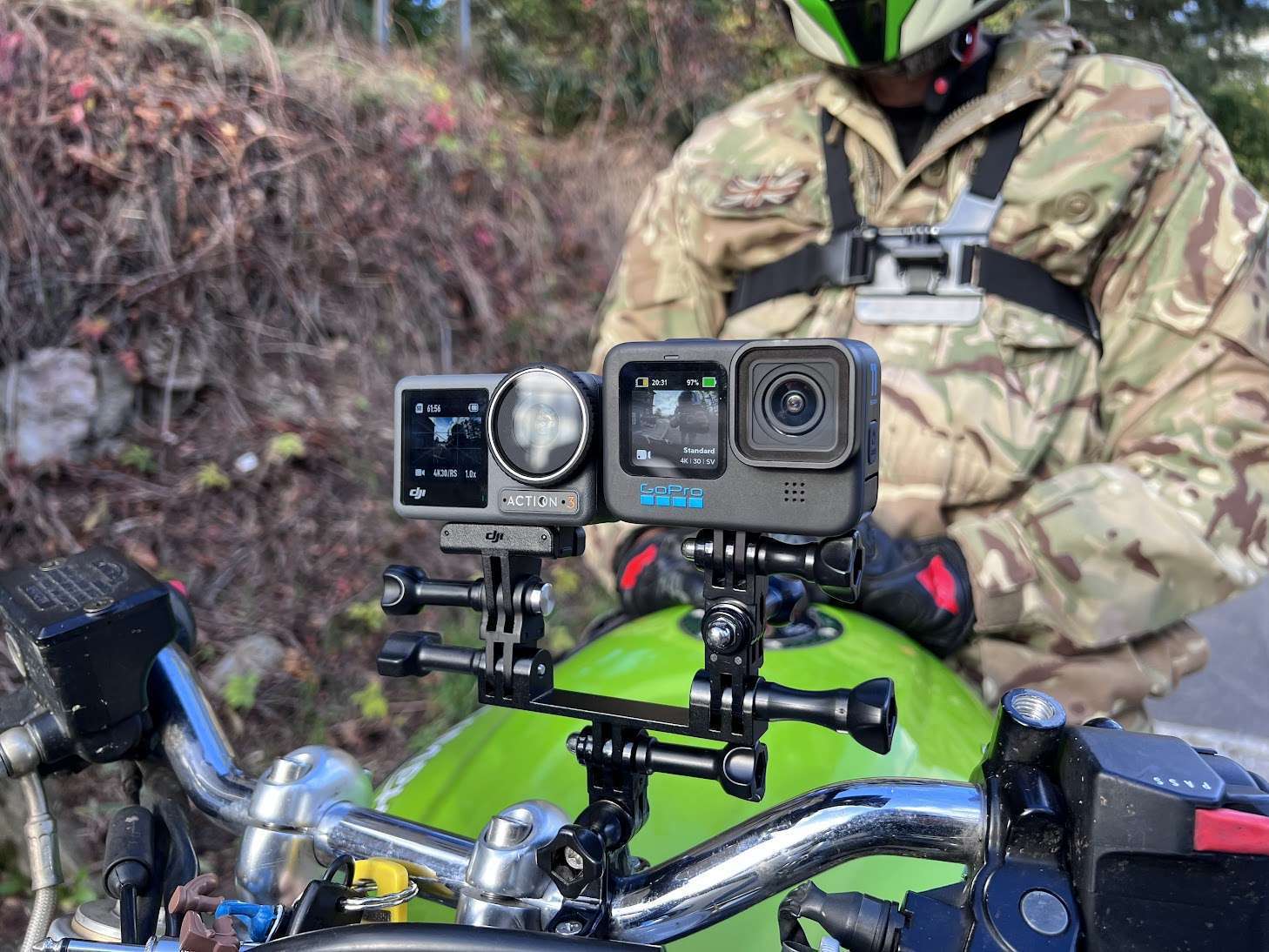
VIDEO QUALITY :
The DJI Osmo Action 3 employs the same 1/1.7 CMOS sensor as the Action 2. Frame rates and definitions range from 1080p at 240 frames per second to 4K at 120 frames per second. As a result, the DJI camera “tops out” at 4K, whereas the GoPro Hero 11 Black achieves 5.3K. Well, it’s evident that the general public will not be dissatisfied, which is a good thing because that is DJI’s – and GoPro’s – target audience. Professionals, on the other hand, will be more at ease with the cropping options provided by GoPro’s maximum resolution.
Instead, let’s discuss about image quality. As previously stated, the Osmo Action uses the same 12-megapixel sensor as the Action 2, and our conclusion is similar to that of the latter: the image quality is good, but GoPro remains superior.
To be more specific, the Osmo Action 3 has a lower dynamic range than the Hero 11 Black. The sky will appear bluer in the photographs from the DJI camera in broad daylight, and we will have no hesitation in promoting the two cameras to the general public: the image quality is obvious. When you start paying attention to detail, you’ll see how far ahead GoPro photographs are – the difference is especially noticeable around the borders. Simply said, the components are more detailed and crisper. The blacks are less congested as well.
Yes, the Osmo Action 3 has far greater difficulties in less liberal and extremely demanding light situations for action cameras. The motorbike passage at 02:20 is tricky, and the camera struggles to expose my face while also producing noisy photos. When you take a little speed – on a motorbike or bicycle, for example – the sky is also much more frequently burnt at DJI.
Similarly, at 03:38, the GoPro reacts significantly faster to the rapid shift in light. Finally, the portion in the church (at the conclusion of the film) provides a nice overview of the differences in low-light behavior between the two cameras: the DJI photos appear brighter, but are unexpectedly quite noisy with washed-out colors.

The DJI camera, on the other hand, contains a color temperature sensor that is meant to automatically change the white balance and auto exposure lock. In reality, some scenarios are better addressed by the Osmo Action 3 when the GoPro Hero 11 Black is in auto ISO mode (which is not enabled by default). Otherwise, for the finest image quality, we recommend the Gopro Hero 11 Black.
The camera has two color profiles: Normal and D-Cinelike, with the latter being more popular among post-production aficionados. Also, at the time of writing, the DJI Osmo Action 3 records in 8 bits, but the Hero 11 Black offers 10 bits. DJI’s next camera upgrade, which is expected to provide 10-bit image quality, will undoubtedly increase image quality.
Now for a clear benefit of the Osmo Action 3. The Action 2 has the same very broad 155° field of vision. This is as broad and nearly as high as GoPro’s additional HyperView field of vision to the Hero 11 Black. In brief, the DJI Osmo Action 3’s Ultra Wide mode allows you to shoot sporting situations in a really realistic manner — and will make you feel like you’re cycling faster than you actually are.
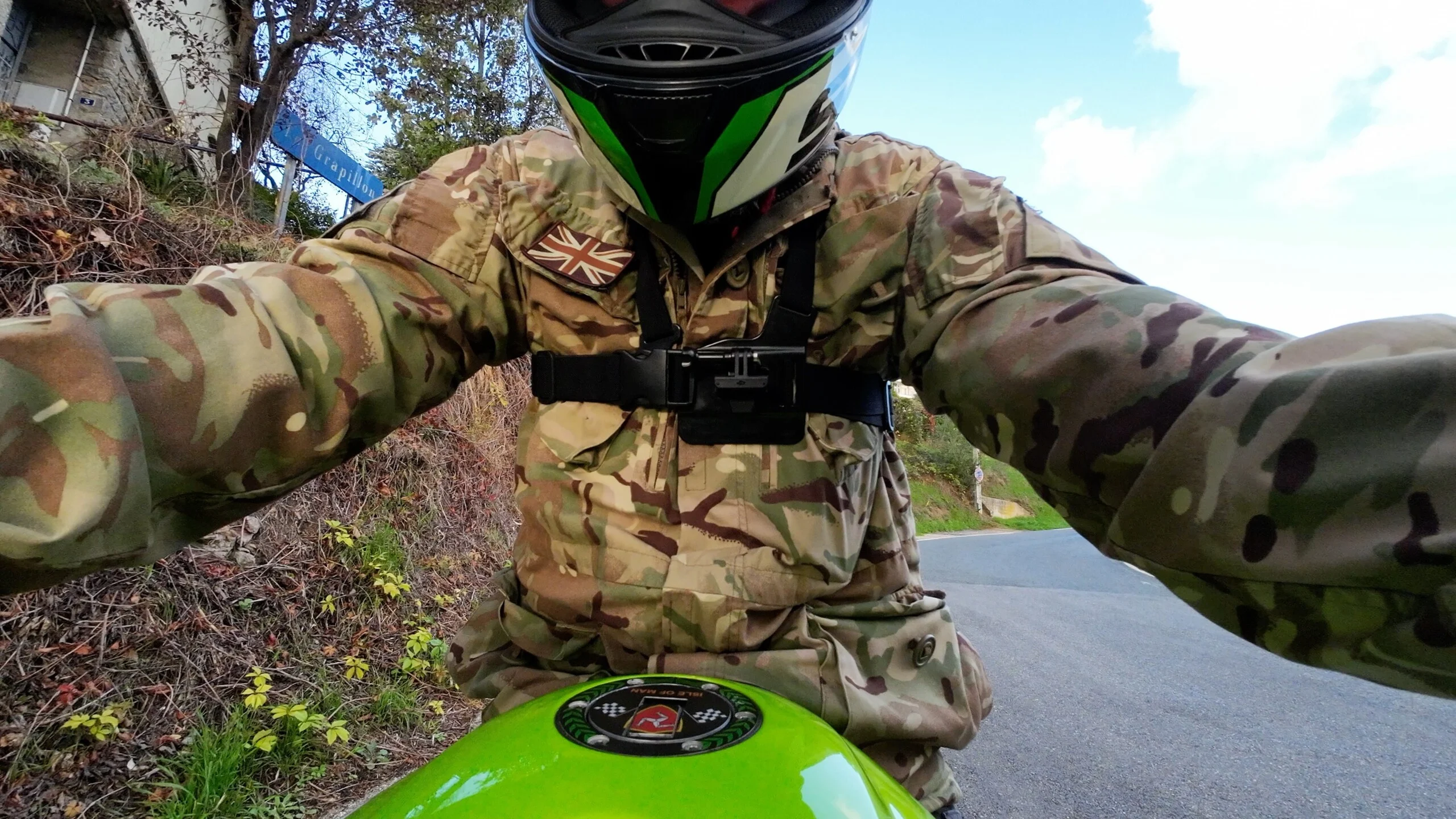
The Osmo Action 3’s narrowest field of vision is nearly as broad as the Hero 11 Black’s ” Wide ” field of view, while distorting the image less. So, around 00:50 in the video above, take attention to the lines of the structure. This can still be annoying in circumstances where you want a more traditional field of view, such as GoPro’s ” Linear ” mode.
AUDIO :
The DJI includes three microphones, just like the GoPro Hero 11 Black. The one positioned behind the camera handles wind reduction, which is sometimes less successful than that of GoPro and sometimes better. It all depends on where the camera is placed and the direction of the wind.
STABILISATION :
For a few years now, stabilization has been a key feature of action cameras. The names of their specific algorithms are also given by the companies; GoPro has HyperSmooth and DJI has RockSteady, which is now at version 3.0.
READ ALSO : is it Xiaomi 13 or Xiaomi 14 coming ?
HORIZON LEVELING :
Aside from its excellent software stabilization, the Osmo Action 3 can “freeze” the horizon at 360 degrees. To put it another way, you may tilt the camera and the horizon will stay steady in the final rendering. This feature, known as HorizonSteady at DJI, is also available at GoPro.
Please keep in mind that this function is only compatible with the Osmo Action 3 up to 2.7K. Horizon holding is limited to 45° in 4K at 60 frames per second, but the GoPro Hero 11 Black gives a complete 360 degree lock. An example may be found around 03:18 in the video above.
OTHER MODES :
The DJI Osmo Action 3 is not as comprehensive as the latest GoPro, but it still includes the standard Time Lapse, Hyper Lapse, and slow motion modes up to 4K at 120 frames per second – best used in well-lit environments. The loop recording mode is also provided, however video programming is not feasible.


-The Osmo Action 3 during a Time Lapse-
AUTONOMY :
DJI stresses the Osmo Action 3’s autonomy and cold resistance in its messaging. The camera could work at -20°C and could record continuously for 150 minutes in 1080p at 30 frames per second.
As a result, we placed it in our freezer at -20°C alongside the GoPro Hero 11 Black outfitted with its Enduro battery, which is also designed to withstand freezing temperatures. What are the outcomes? The DJI camera has a battery life of 157 minutes. That’s 25 minutes longer than the GoPro, which died after 132 minutes. It should be noted that the two cameras were at room temperature prior to the start of the test.
| DJI Osmo Action 3 | GoPro Hero 11 Black | |
|---|---|---|
| 4K at 60 frames per second | 88 minutes | 69 minutes |
| 1080p at 30 frames per second | 156 minutes | 129 minutes |
The 1770 mAh battery in the Osmo Action 3 also resists overheating somewhat better than the 1720 mAh GoPro Enduro battery in the GoPro Hero 11 Black.
The 160 minutes of autonomy claimed by DJI are virtually accomplished in 1080p at 30 frames per second, more than 21% greater than the Hero 11 Black. The Osmo Action 3 has a 27% longer recording time in 4K at 60 frames per second than the American camera. It is certainly not insignificant.

The 1770 mAh battery in the Osmo Action 3 outperforms the GoPro Hero 11 Black’s 1720 mAh GoPro Enduro battery in terms of resistance to overheating.
The 160 minutes of autonomy DJI promised are virtually reached in 1080p at 30 frames per second, surpassing the Hero 11 Black by more than 21%. The Osmo Action 3 has a recording time 27% longer than the American camera in 4K at 60 frames per second. It is obviously not insignificant.

The Osmo Action 3 is described as “the first action camera that natively supports rapid charging technology” in its final paragraph. According to DJI, it just takes 18 minutes for the camera to reach 80%. By connecting the camera to two separate fast chargers, we were able to confirm this. In any case, the Osmo Action 3’s battery will have reached 56% of its initial capacity. Despite the fact that the promise was broken (definitely a charging protocol tale), this charging speed was more than sufficient for us.
It charges the camera in less than 42 minutes, which is twice as quickly as the GoPro Hero 11 Black. Once more, this is a significant benefit for the Chinese camera.
PRICE AND RELEASE DATE :
The DJI Osmo Action 3 is sold for $329. and also you can find the Osmo Action 3 Adventure Combo for $439. GoPro appears to have reduced its costs since the release of the Hero 11 Black, but the DJI camera is still 140 dollars cheaper at established shops.
DJI provides multiple kits for its Osmo Action 3 that include various attachments for cycling, skiing, and diving. The brand’s most prominent package is the “Adventure Bundle,” which includes the camera, three batteries, two installation supports (rather than one), a 1.5-meter extension bar, and a battery case. The latter is very well thought out and can accommodate and recharge three batteries in a row. The Adventure Bundle costs 100 dollars more than the Standard package and includes the camera, a battery, and installation assistance.


